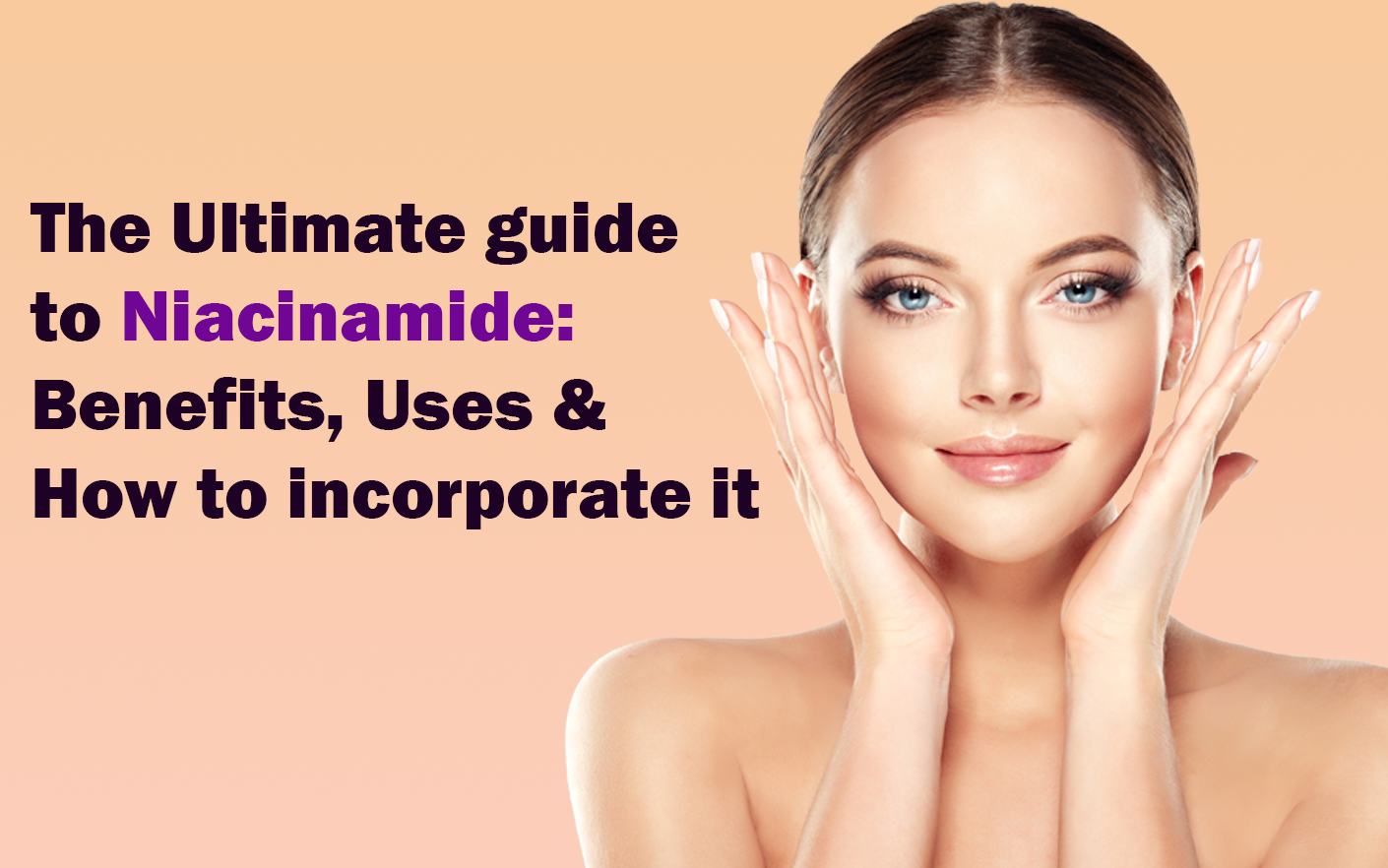
Benefits, Uses & How to Incorporate it
Niacinamide (Vitamin B3) has become a skincare superstar, praised for its versatility in treating acne, hyperpigmentation, and aging. But how does it work? What skin types benefit most? And how should you use it for best results?
In this blog, we’ll explore:
- What niacinamide is and how it works in the skin
- The proven benefits for different skin concerns
- Who should use it (and who should be cautious)
- How to layer it with other actives
- What to look for in niacinamide products
- Natural sources of Vitamin B3
1. What Is Niacinamide & How Does It Work?
Niacinamide is a water-soluble form of Vitamin B3 that supports skin barrier function and cellular repair.
Key Mechanisms:
- Strengthens the Skin Barrier – Boosts ceramide production to lock in moisture.
- Regulates Sebum – Reduces excess oil without overdrying.
- Brightens Skin Tone – Inhibits melanin transfer to fade dark spots.
- Reduces Inflammation – Calms redness (great for rosacea & acne).
- Minimizes Pores – Improves skin texture over time.
2. Proven Benefits of Niacinamide
- Regulates oil production & reduces clogged pores.
✔ Fights Acne & Breakouts
- Evens out skin tone (studies show results in 4-8 weeks).
✔ Fades Hyperpigmentation & Dark Spots
- Stimulates collagen for firmer skin.
✔ Reduces Fine Lines & Wrinkles
- Anti-inflammatory properties calm irritated skin.
✔ Soothes Redness & Rosacea
- Tightens pores by balancing sebum.
✔ Minimizes Pore Appearance
3. Who Should Use Niacinamide?
✅ Best For:
- Oily/Acne-Prone Skin – Controls shine & breakouts.
- Dry/Sensitive Skin – Reinforces moisture barrier.
- Aging Skin – Boosts elasticity & smoothness.
- Hyperpigmentation – Fades sun spots & post-acne marks.
⚠️ Caution Needed If:
- You have extremely sensitive skin (start with low 2-3% concentration).
- You’re allergic to niacin (rare but possible).
4. How to Use Niacinamide in Your Routine
✔ Concentration Matters
- Beginners: 2-5%
- Advanced: 10% (higher isn’t always better—can cause irritation).
✔ Best Application Steps
- Cleanse
- Toner/Essence (optional)
- Niacinamide Serum
- Moisturizer
- Sunscreen (morning)
❌ Avoid Mixing With:
- Strong Acids (e.g., AHA/BHA) – Can cause flushing in some.
5. Choosing the Right Niacinamide Product
✔ Look For:
- 2-10% niacinamide (ideal range).
- Minimal irritants (no alcohol, fragrance).
- Supporting Ingredients (zinc, panthenol, ceramides).
✔ Formats:
- Serums – Highest potency.
- Moisturizers – Gentle, daily use.
- Toners – Lightweight layering.
6. Natural Sources of Vitamin B3
🍗 Dietary Sources:
- Chicken, turkey, salmon
- Peanuts, mushrooms, green peas
- Lentils & Quinoa (Great plant-based options).
💊 Supplements:
- Oral niacinamide (for systemic benefits).
Disclosure: As an Amazon Associate, We earn from qualifying purchases. Product prices and availability are accurate as of the date/time indicated and are subject to change.
Whey Protein
Vitamin C
LEAVE A REPLY
Your email address will not be published. Required fields are marked *
Fast Delivery
Across West & East India
safe payment
100% Secure Payment
Online Discount
Add Multi-buy Discount
Help Center
Dedicated 24/7 Support
Curated items
From Handpicked Sellers





LEAVE A COMMENTs
Lucie Thomas
"My dark spots faded WAY faster with niacinamide than vitamin C. Mind blown!"
Martin Regan
"Can I use this with retinol? So many mixed answers online!"
Jessica Simon
"Combined niacinamide with SPF—my skin has never looked this even. Game changer!"